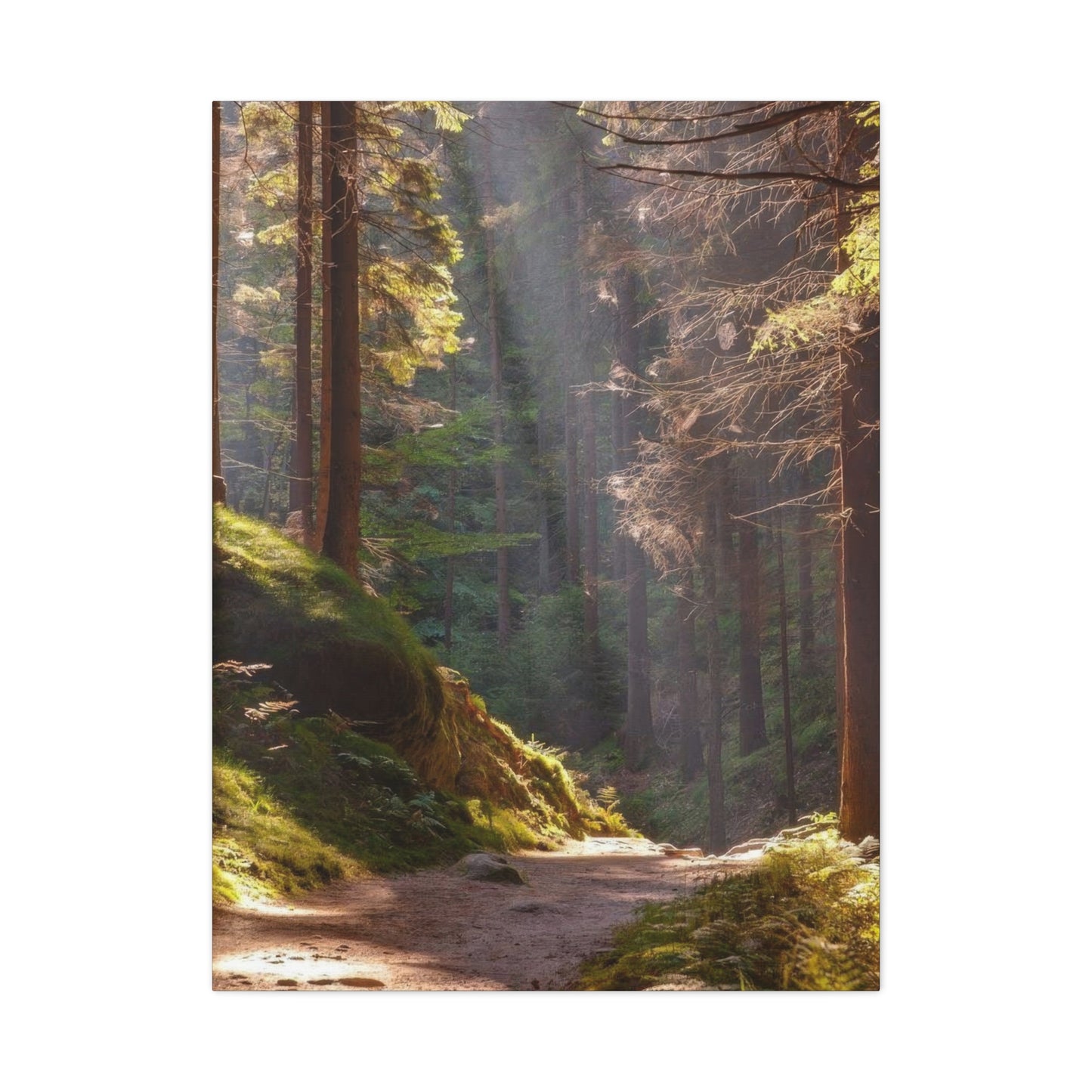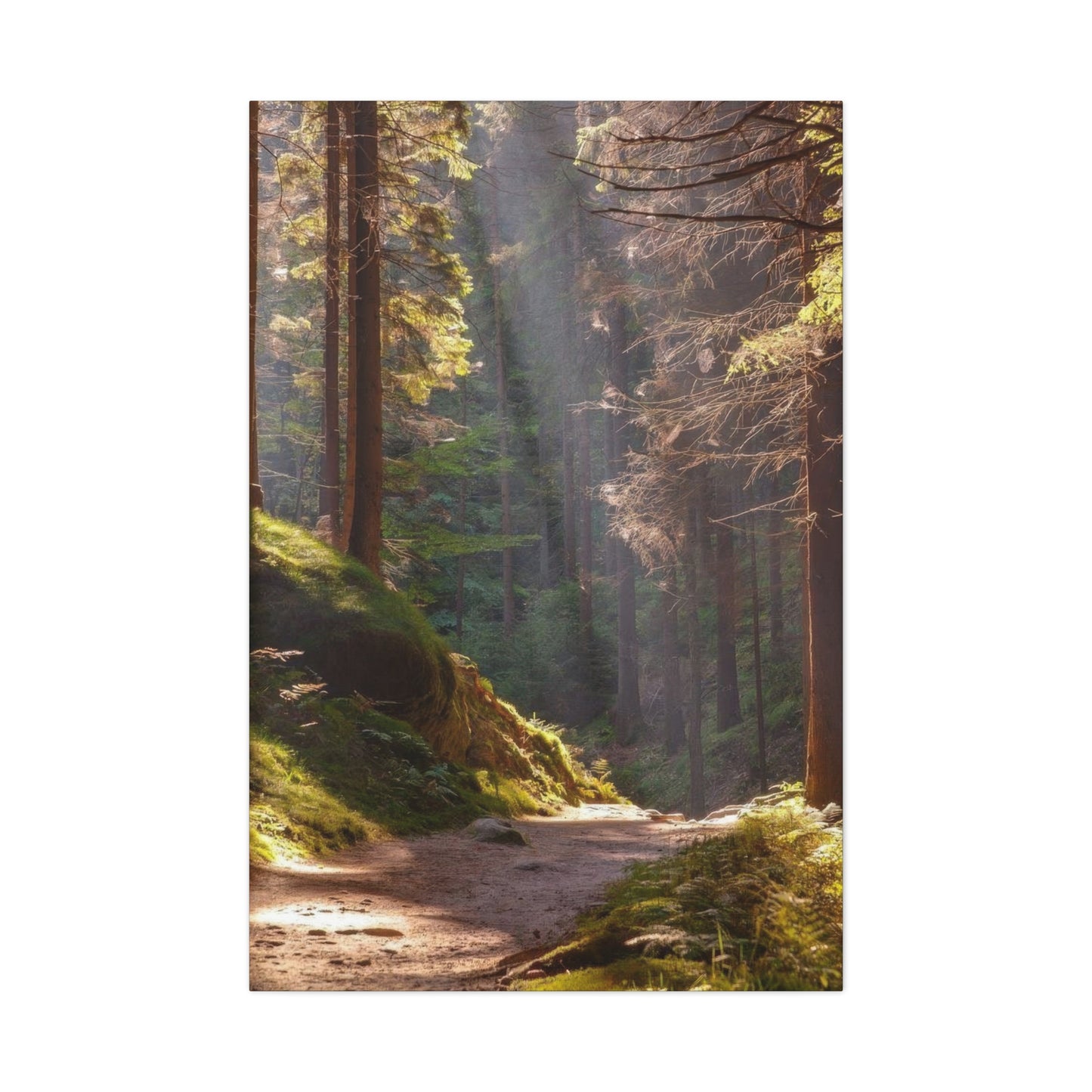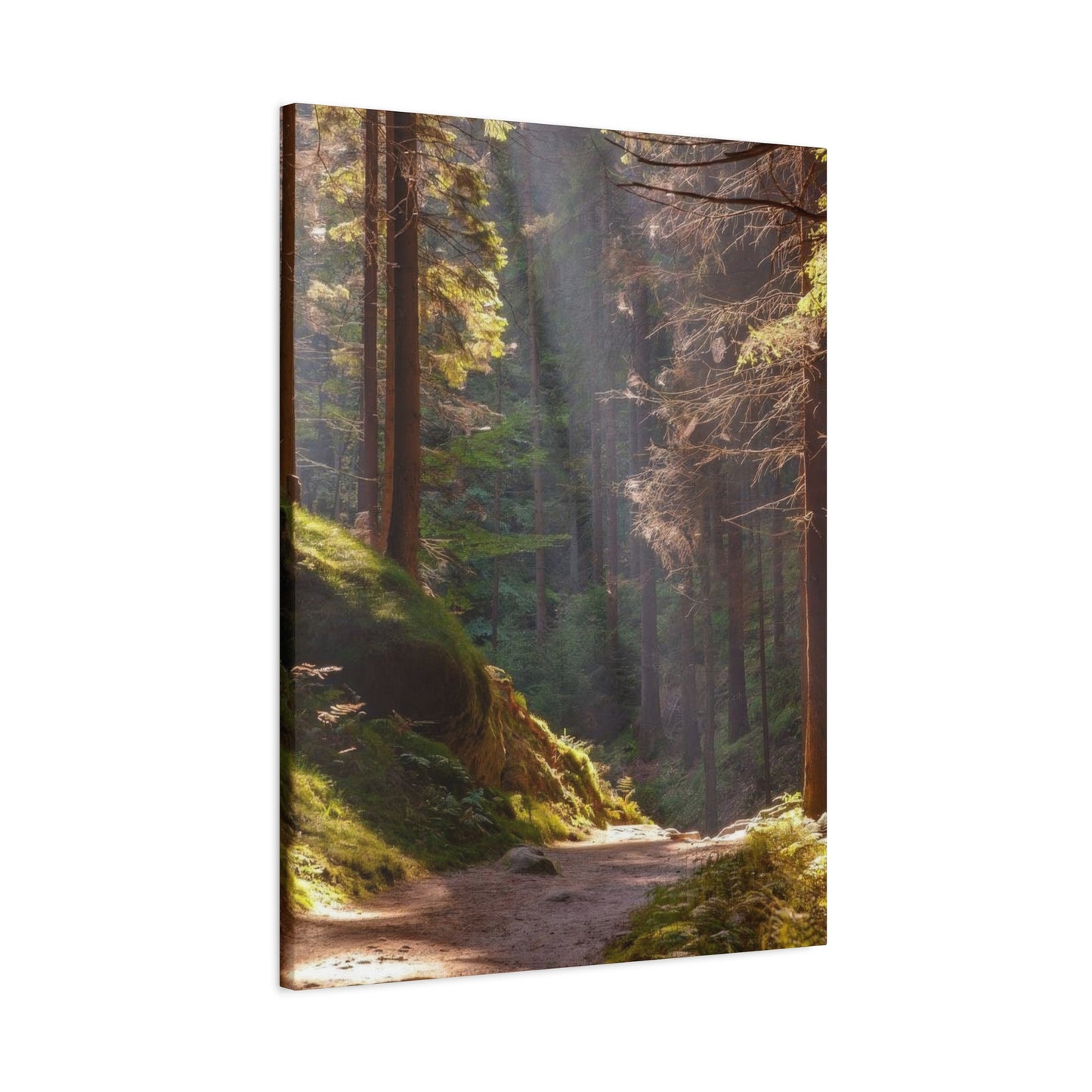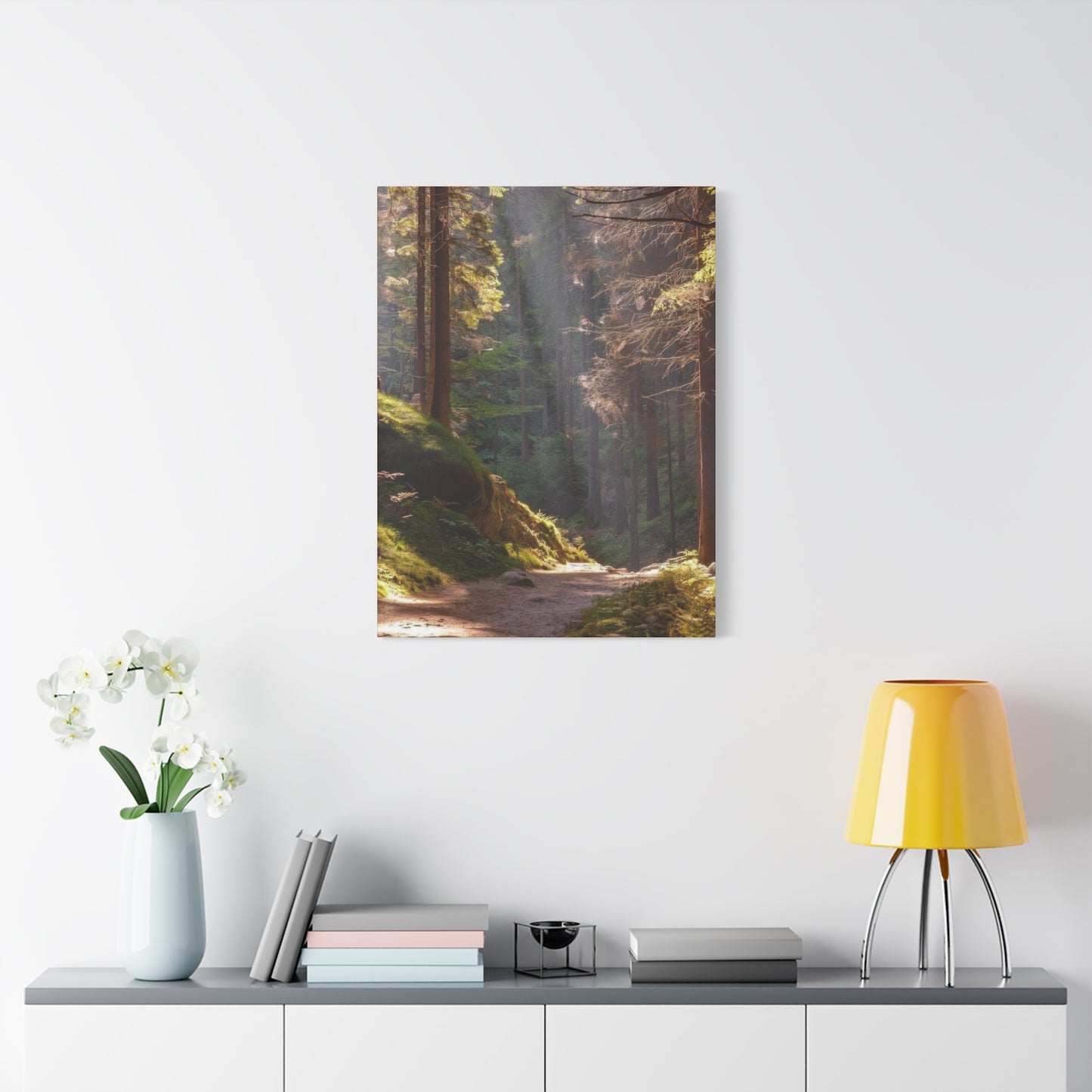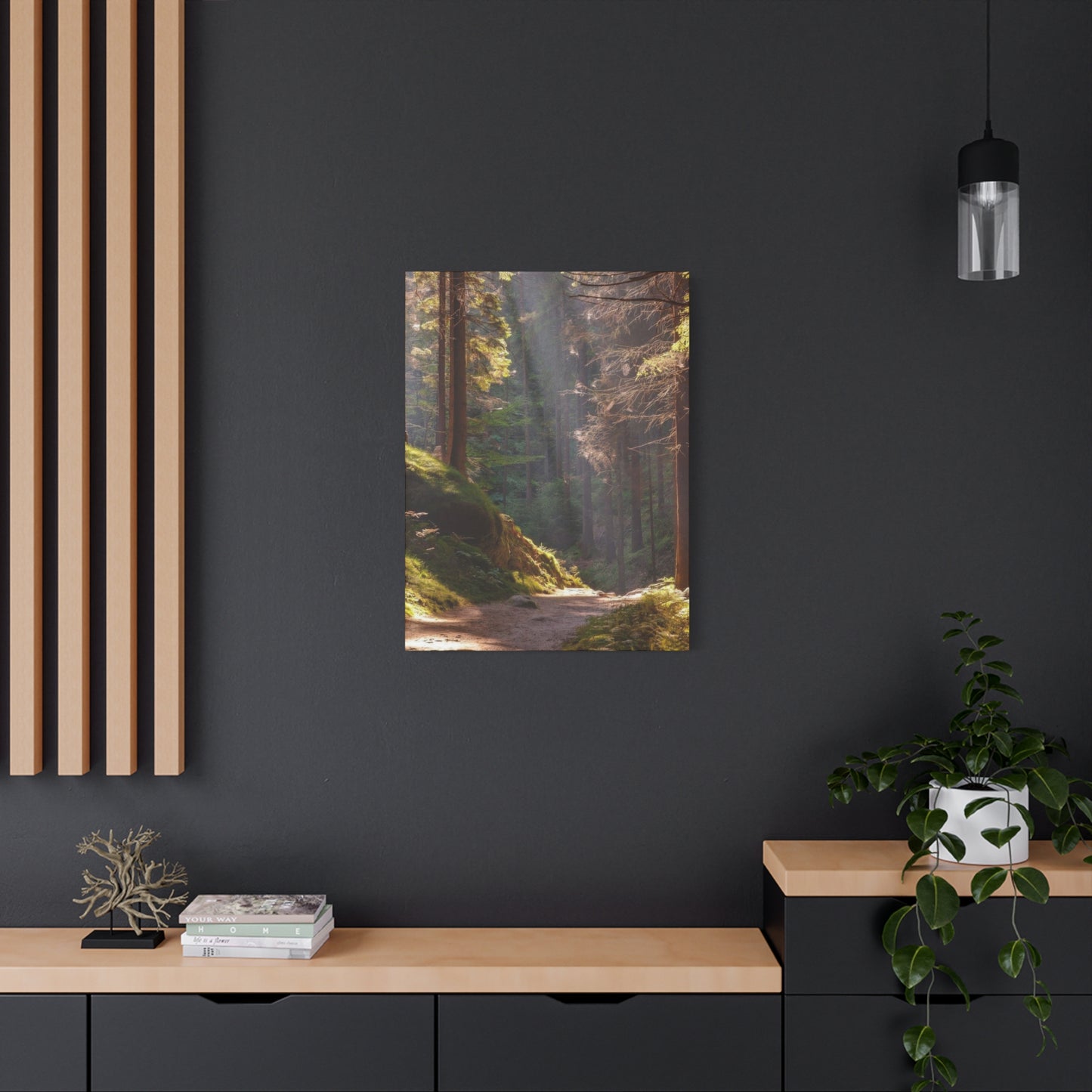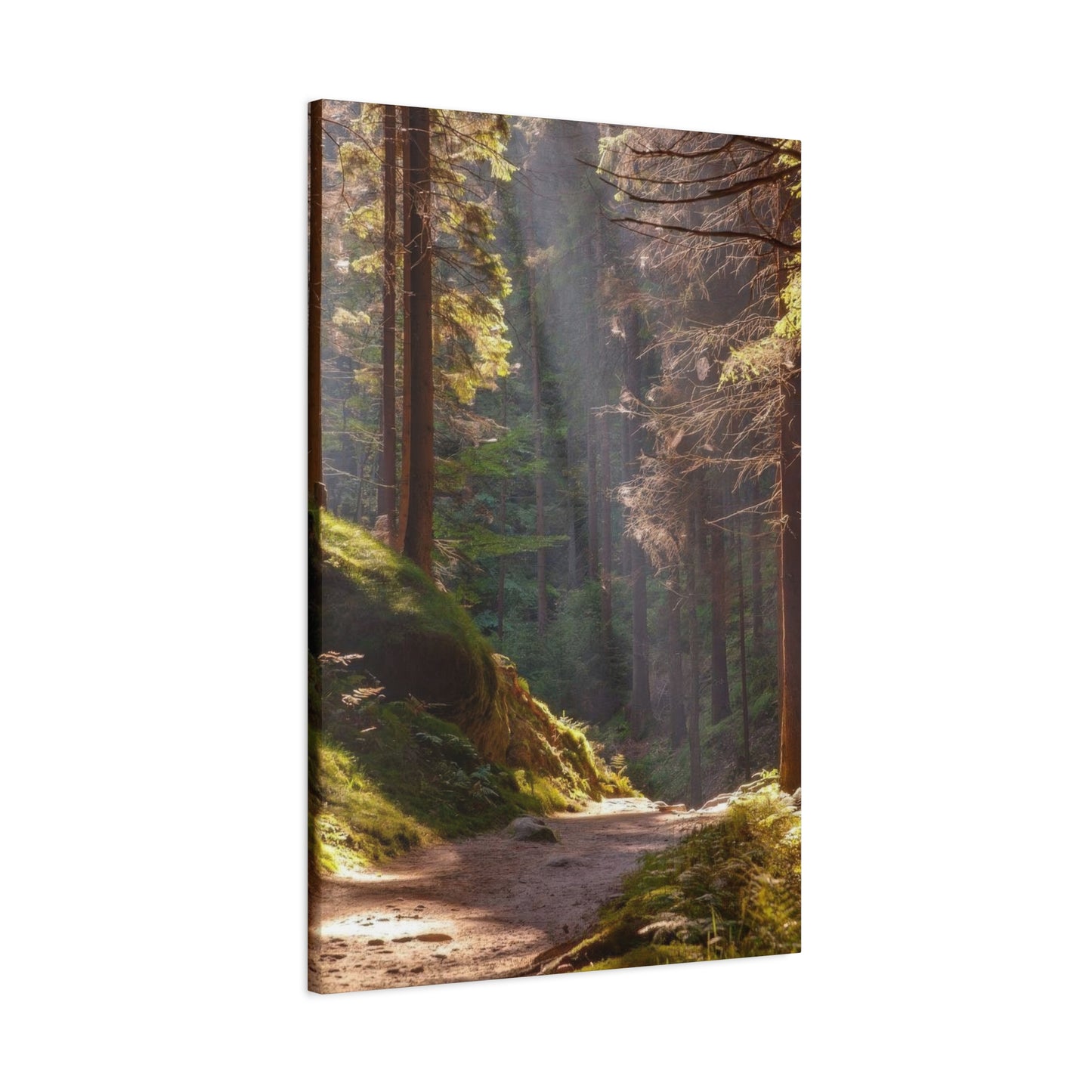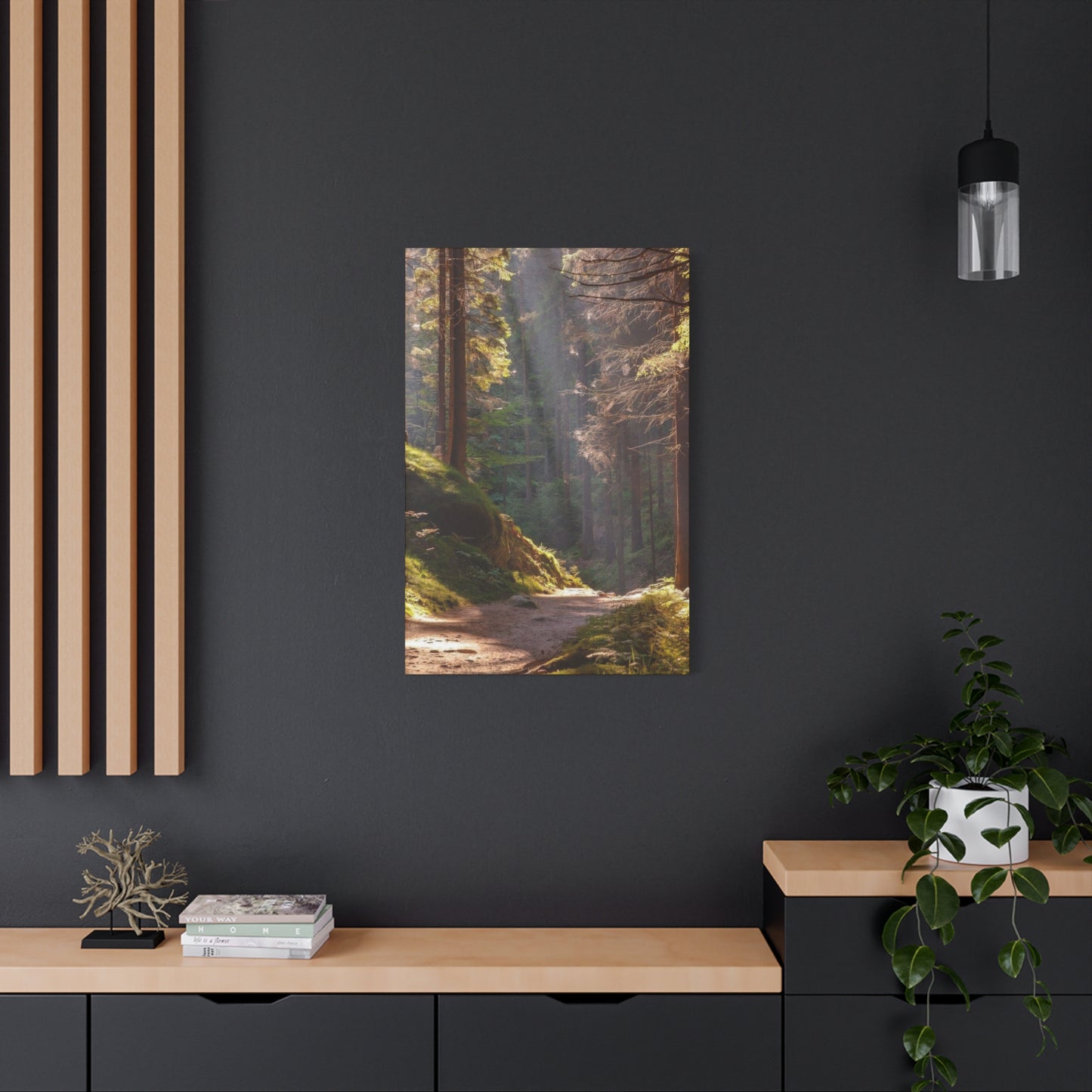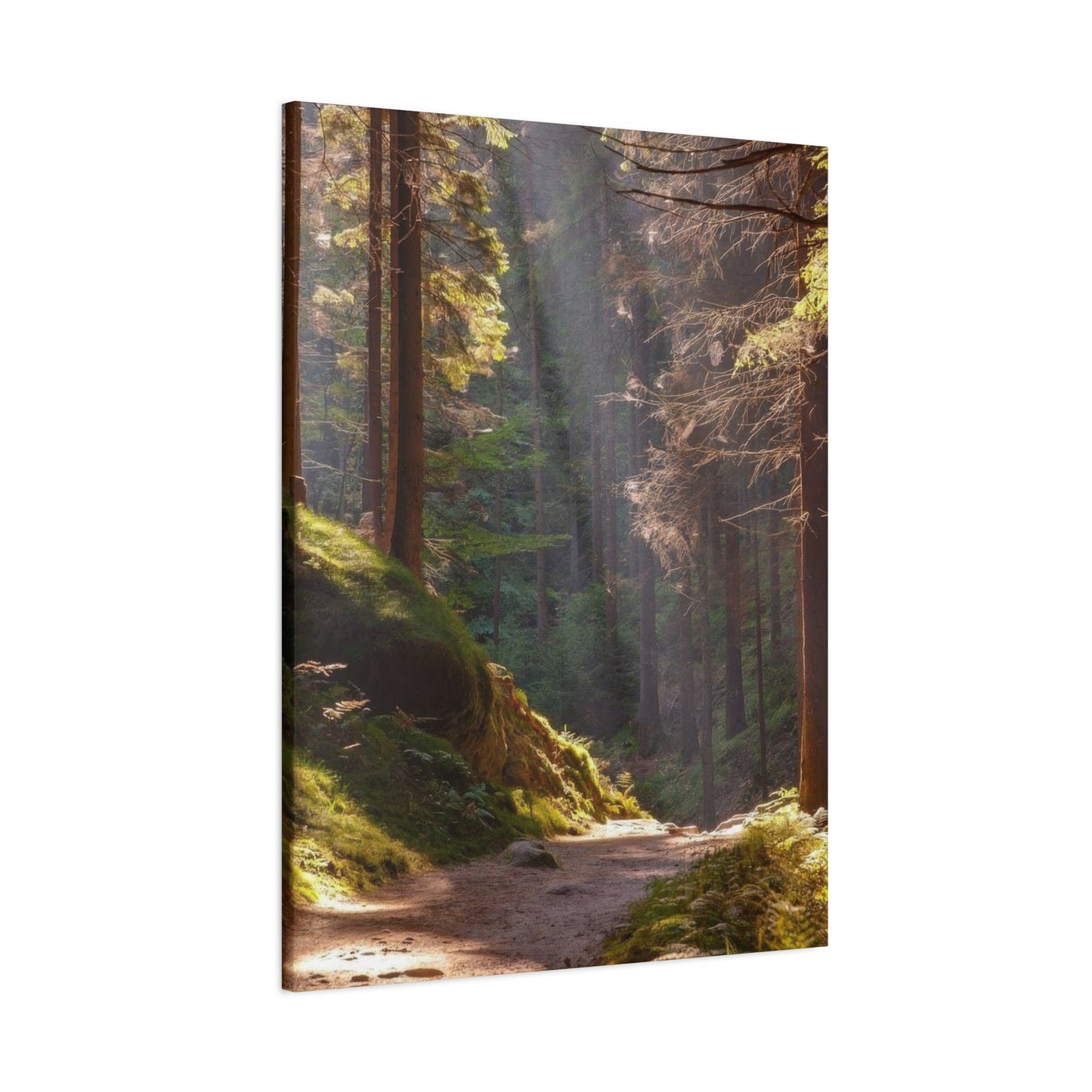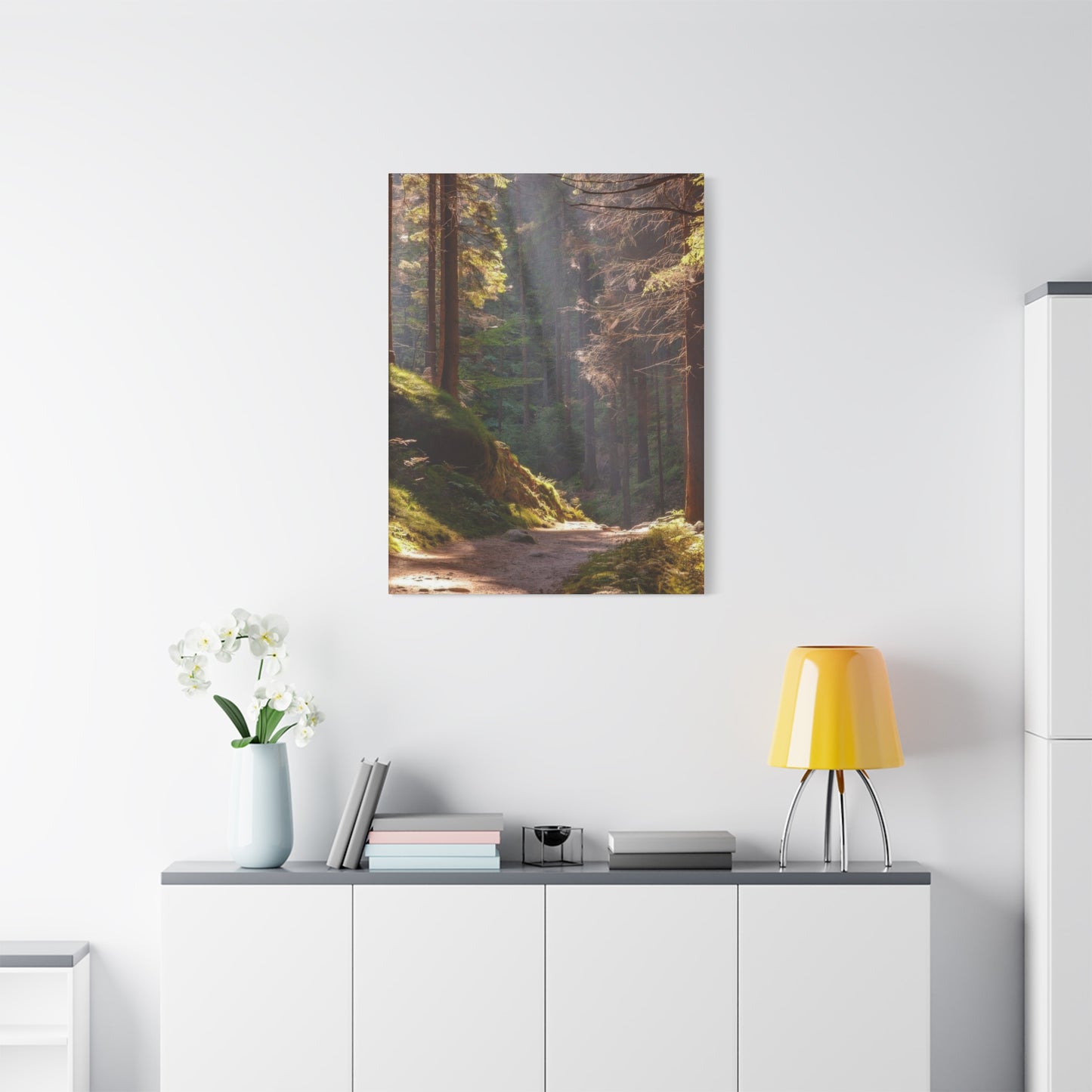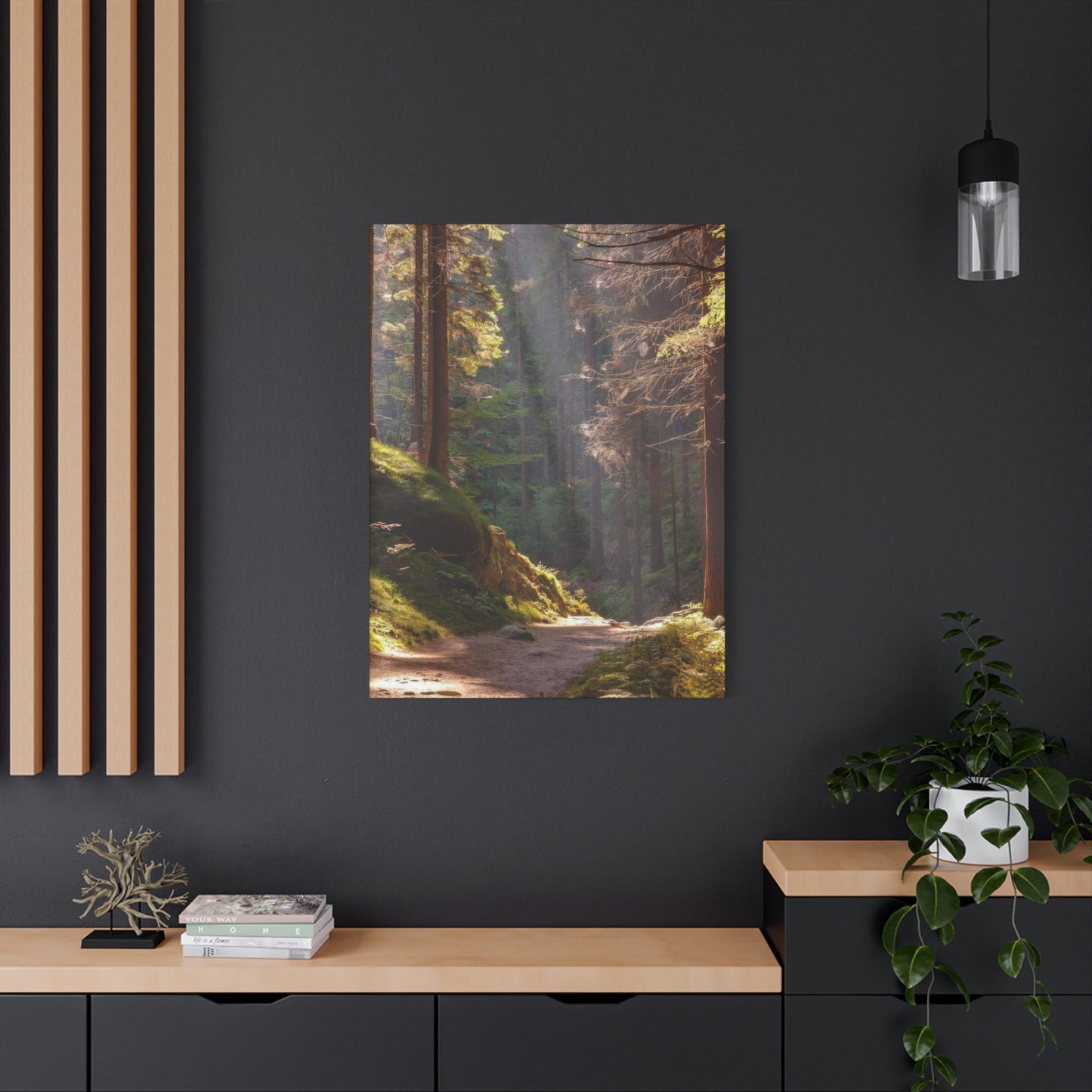Autumn Forest Path Wall Art: Transforming Your Living Space with Nature's Seasonal Beauty
The changing seasons bring with them a profound transformation in the natural world, and few transitions are as visually stunning as the arrival of autumn. When golden yellows, fiery oranges, and deep crimson reds begin to paint the landscape, there emerges an irresistible urge to capture this fleeting beauty and bring it into our living spaces. Decorative pieces featuring winding trails through vibrant woodland scenes have become increasingly popular among homeowners and interior design enthusiasts who seek to create warm, inviting environments that celebrate the natural world. These artistic representations offer more than mere decoration; they serve as windows into the serene beauty of nature's most colorful season, providing daily reminders of the peaceful landscapes that exist beyond our walls.
The appeal of such artwork extends far beyond aesthetic considerations. In our increasingly urbanized world, where concrete and steel dominate the landscape, incorporating natural imagery into interior spaces has become essential for maintaining a connection to the outdoors. Visual representations of woodland trails during the harvest season offer a particularly effective way to achieve this connection, as they combine the tranquility of nature with the warmth and comfort associated with cooler months. Whether displayed in residential settings or professional environments, these pieces have the remarkable ability to transform ordinary rooms into sanctuaries of calm and beauty.
This comprehensive exploration delves into the multifaceted world of seasonal woodland imagery, examining how these artistic pieces can enhance various aspects of our lives. From the psychological benefits they provide to the practical considerations of incorporating them into different decorating schemes, we will explore every dimension of this increasingly popular design trend. Through understanding the deeper meanings, therapeutic qualities, and stylistic versatility of these natural scenes, you will discover how to effectively integrate them into your personal or professional spaces, creating environments that nurture both the eye and the spirit throughout the year.
Welcoming Seasonal Splendor Into Your Domestic Sanctuary
Transforming your house into a home requires more than simply furnishing rooms with functional pieces. The true essence of creating a welcoming domestic environment lies in the thoughtful selection of decorative elements that reflect your personality, values, and aesthetic preferences. Incorporating imagery that showcases winding trails through colorful woodlands during the harvest season represents one of the most effective ways to infuse your living space with warmth, character, and a profound connection to the natural world.
The process of selecting and displaying such artwork begins with understanding the unique qualities that make these pieces so appealing. Unlike static floral arrangements or generic landscape photography, visual representations of trails winding through vibrant woodland scenes capture a sense of journey and exploration. They invite viewers to imagine themselves walking along those leaf-strewn paths, surrounded by the crisp air and vibrant colors that define the season. This imaginative engagement creates an emotional connection that goes beyond simple visual appreciation, transforming passive observation into active participation.
When considering which pieces to incorporate into your home, reflect on the specific moods and atmospheres you wish to create in different rooms. A bedroom might benefit from softer, more muted tones that promote relaxation and restful sleep, featuring gentle morning light filtering through golden canopies. In contrast, a living room or entryway could accommodate bolder, more dramatic pieces that showcase the full intensity of seasonal color, with vivid reds and oranges creating an immediate impact on anyone who enters the space.
The placement of these decorative elements requires careful consideration of existing furnishings, architectural features, and lighting conditions. A large-scale piece depicting a sweeping view of a woodland trail can serve as a stunning focal point above a fireplace or sofa, drawing the eye and anchoring the entire room's design scheme. Smaller works might be grouped together to create gallery walls that tell a visual story, perhaps following the progression of the season from early color changes to peak brilliance. Consider how natural and artificial light sources will interact with your chosen pieces throughout the day, as different lighting conditions can dramatically alter the appearance and mood of the imagery.
Beyond mere placement, the framing and presentation of woodland trail imagery plays a crucial role in how effectively these pieces integrate with your existing design scheme. Traditional wood frames in warm tones complement the natural subject matter while adding a touch of classic elegance. Modern, minimalist frames in black or white create striking contrasts that allow the vibrant colors of the season to take center stage. For contemporary spaces, consider frameless options or pieces printed on canvas that wrap around the edges, creating a clean, streamlined appearance that feels fresh and current.
The incorporation of seasonal woodland imagery also offers opportunities to create thematic consistency throughout your home. By selecting pieces that share similar color palettes or compositional elements, you can establish visual connections between different rooms, creating a sense of flow and continuity as family members and guests move through your space. This cohesive approach to decorating elevates individual rooms from isolated spaces to interconnected elements of a larger, harmonious whole.
Consider also the seasonal flexibility these pieces provide. While they obviously align perfectly with the harvest months, high-quality representations of woodland trails possess a timeless quality that allows them to remain relevant and beautiful throughout the year. The warm tones and natural subject matter create comfort during winter months, serve as pleasant reminders of seasonal change during spring and summer, and reach their peak relevance when the actual season arrives. This year-round versatility makes them an excellent investment for homeowners who prefer decorative elements that transcend fleeting trends and temporary seasonal displays.
Discovering Serenity Through Woodland Trail Imagery
In our fast-paced modern world, finding moments of genuine peace and tranquility has become increasingly challenging. The constant barrage of digital notifications, work demands, and social obligations leaves many people feeling perpetually stressed and disconnected from the slower, more natural rhythms that governed human life for millennia. Visual representations of quiet woodland trails during the harvest season offer a powerful antidote to this contemporary malaise, providing accessible portals to calm and serenity that require nothing more than a moment's pause and attentive observation.
The calming effects of natural imagery have been extensively documented by researchers in fields ranging from environmental psychology to neuroscience. Studies consistently demonstrate that viewing scenes from nature triggers measurable physiological responses associated with relaxation and stress reduction. Heart rates slow, blood pressure decreases, and stress hormone levels decline when people spend time observing natural landscapes, even when those landscapes are experienced secondhand through artistic representations rather than direct immersion. The mechanisms behind these effects are both psychological and biological, rooted in our evolutionary history as creatures who developed in close relationship with natural environments.
Woodland trails during the colorful season possess specific qualities that enhance their calming potential. The gentle curves of meandering paths create visual rhythms that our eyes follow naturally, inducing a meditative state similar to that experienced during contemplative practices. Unlike harsh geometric lines or chaotic compositions, the organic forms found in natural settings align with patterns our brains have evolved to find pleasing and restful. The absence of straight lines, sharp angles, and artificial symmetry allows our visual processing systems to relax, reducing cognitive load and mental fatigue.
The color palette characteristic of this season also contributes significantly to its tranquilizing effects. Warm tones like golden yellow, burnt orange, and deep red possess inherent psychological properties that influence mood and emotional state. These hues are associated with warmth, comfort, and security, triggering emotional responses rooted in our most basic survival instincts. The prevalence of these colors during the harvest season historically signaled abundance and preparation for winter, creating positive associations that remain embedded in our collective consciousness. When we surround ourselves with these colors through carefully chosen artwork, we tap into these ancient connections, creating environments that feel inherently safe and nurturing.
The presence of clearly defined trails within these natural scenes adds an additional layer of psychological comfort. Paths represent order within nature's apparent chaos, suggesting human presence and the possibility of safe exploration. They provide visual entry points into the scene, inviting viewers to mentally journey along them, imagining the experience of walking through that beautiful landscape. This imaginative engagement serves as a form of mental escape, allowing overstressed minds to temporarily leave behind immediate concerns and worries. Even brief moments of such mental respite can significantly impact overall stress levels and emotional wellbeing.
For individuals dealing with anxiety, depression, or other mental health challenges, the presence of calming natural imagery in living and working spaces can serve as an important component of environmental therapy. While such artwork certainly does not replace professional treatment or therapeutic interventions, it contributes to creating healing environments that support mental health and emotional resilience. The simple act of pausing to observe a peaceful woodland scene can interrupt negative thought patterns, provide grounding during moments of acute stress, and serve as a visual reminder of the larger, slower world that exists beyond our immediate concerns.
The therapeutic potential of these images extends beyond individual viewers to influence the overall atmosphere of shared spaces. Living rooms, waiting areas, and communal spaces decorated with serene natural scenes tend to feel more welcoming and peaceful, affecting the moods and behaviors of everyone who enters them. Conversations held in such spaces often take on a more relaxed, contemplative quality, as the environmental cues provided by the artwork subtly encourage calm and reflection. This makes woodland trail imagery particularly valuable in homes where multiple family members need shared spaces that serve diverse functions while maintaining a peaceful, harmonious atmosphere.
Embracing Nature's Vibrant Palette in Decorative Design
The spectacular color transformation that occurs during the harvest season represents one of nature's most dramatic and beloved displays. The gradual shift from the uniform greens of summer to a dazzling array of yellows, oranges, reds, and browns creates landscapes of breathtaking beauty that have inspired artists, poets, and nature enthusiasts for centuries. Capturing and incorporating this incredible palette into interior spaces through carefully selected artwork allows homeowners to celebrate this seasonal spectacle while creating visually dynamic and emotionally resonant environments.
Understanding the specific colors that characterize this seasonal transition enhances appreciation for their representation in decorative pieces. The process begins when decreasing daylight hours trigger chemical changes within deciduous trees, causing the breakdown of chlorophyll and revealing other pigments previously masked by green. Carotenoids produce the warm yellows and oranges seen in species like birches, aspens, and hickories. Anthocyanins create the brilliant reds and purples found in maples, oaks, and sumacs. Tannins contribute the browns and bronzes that add depth and richness to the overall palette. Together, these pigments create the complex, layered color schemes that make harvest season landscapes so visually compelling.
When these natural color combinations are translated into decorative pieces, they bring with them not only visual beauty but also psychological and emotional effects. Color psychology research has established that different hues influence mood, energy levels, and even cognitive function in measurable ways. The warm tones dominant during this season generally promote feelings of comfort, security, and contentment. Golden yellows evoke optimism and mental clarity, encouraging positive outlooks and creative thinking. Rich oranges stimulate enthusiasm and social connection, making spaces feel more inviting and conducive to gathering. Deep reds add drama and intensity, creating focal points that command attention while also conveying warmth and passion.
The multifaceted nature of seasonal woodland color schemes provides decorators with remarkable versatility. A single piece featuring a trail through colorful woods contains numerous hues that can be echoed and amplified throughout a room's design scheme. Throw pillows in burnt orange might pick up on the tones in painted foliage, while area rugs in golden yellow complement the dappled sunlight filtering through the canopy. Even smaller accessories like candles, vases, and decorative objects can reference colors found within the central artwork, creating layers of visual connection that make spaces feel cohesive and intentionally designed.
This approach to color coordination extends beyond exact matching to include complementary and analogous color relationships. The natural color harmonies found in seasonal landscapes provide ready-made palettes that designers have spent millennia perfecting through evolutionary processes. By allowing natural imagery to guide color choices throughout a room, decorators can achieve sophisticated results without requiring advanced color theory knowledge. The colors that appear together in nature have proven compatibility, ensuring that rooms designed around these natural palettes feel balanced and harmonious rather than chaotic or overwhelming.
Seasonal variations in natural light also interact beautifully with harvest season color palettes. During the months when this seasonal change actually occurs, the quality of sunlight shifts, becoming warmer and more golden as the sun takes a lower path across the sky. Artwork featuring these same warm tones seems to glow when illuminated by this seasonal light, creating magical moments when artificial decoration and natural phenomena align perfectly. Even during other seasons, carefully selected lighting can enhance the warm tones in woodland imagery, allowing these pieces to maintain their impact and relevance throughout the year.
For those concerned about color trends and the longevity of their decorating choices, the palette associated with this season offers reassuring timelessness. Unlike trendy colors that quickly feel dated, these natural hues possess an enduring appeal rooted in human evolutionary history and cultural tradition. Harvest celebrations across numerous cultures have consistently featured these same warm tones, creating associations that transcend individual aesthetic preferences or temporary fashions. Investing in artwork that showcases these colors means choosing pieces that will remain relevant and beautiful for decades, regardless of shifting design trends.
Cultivating Warmth and Comfort Through Natural Imagery
The concept of creating cozy, inviting living spaces has gained significant cultural traction in recent years, with entire design philosophies emerging around the pursuit of domestic comfort and wellbeing. While various cultural traditions approach this goal differently, they share common threads of warmth, softness, natural materials, and thoughtful attention to sensory experience. Artwork depicting winding trails through colorful woodland landscapes plays a surprisingly significant role in achieving these cozy atmospheres, contributing visual elements that enhance the overall sense of comfort and refuge that characterizes truly inviting spaces.
The connection between natural imagery and perceived comfort operates on multiple levels. Most fundamentally, these scenes evoke memories and associations with outdoor experiences that many people find deeply satisfying and restorative. Walking through wooded areas during peak color season remains a beloved activity across diverse cultures and demographics, representing opportunities to escape daily pressures, connect with nature, and experience the simple pleasure of being surrounded by beauty. Bringing visual representations of such experiences into domestic spaces allows homeowners to maintain connection with these positive memories and feelings, creating environments that feel emotionally nurturing and psychologically supportive.
The specific visual characteristics of woodland trails during the harvest season contribute to their coziness-enhancing properties. The warm color palette discussed previously plays an obvious role, as these hues are inherently associated with warmth, both literally and figuratively. The presence of trees creating natural canopies over trails adds an element of enclosure and shelter, subtly suggesting protection from elements and outside threats. This sense of being safely enclosed while still connected to the larger natural world creates a perfect balance between security and freedom that lies at the heart of true comfort.
Texture, though represented visually rather than tactilely in artwork, also contributes to the cozy atmosphere. The varied textures visible in quality representations of woodland scenes including rough bark, smooth stones along pathways, soft leaf litter carpeting the ground, and the varied surfaces of fallen logs and natural debris create visual richness that engages the eye and imagination. Our brains, trained by countless physical experiences with these materials, supply the tactile information even when viewing two-dimensional representations, creating a fuller, more immersive experience than flat, textureless imagery could provide.
The interplay of light and shadow in woodland scenes adds another dimension to their comfort-enhancing qualities. Dappled sunlight filtering through colorful canopies creates patterns of brightness and shade that feel dynamic and alive, suggesting the gentle movement of leaves in autumn breezes. These patterns of light recall the primal comfort of being near a fire, with its constantly shifting play of light and shadow. They also create visual interest and depth that prevent spaces from feeling static or lifeless, contributing to environments that feel vibrant and engaging rather than merely decorated.
When intentionally incorporated into broader design schemes focused on creating cozy spaces, woodland trail imagery works synergistically with other elements to amplify the overall effect. Soft textiles like plush throws, velvet cushions, and thick area rugs provide the tactile comfort that complements the visual warmth of the artwork. Natural materials including wood furniture, stone accents, and woven baskets echo the natural elements depicted in the imagery, creating thematic consistency that makes spaces feel intentional and coherent. Warm lighting from table lamps, floor lamps, and candles mimics the golden quality of light shown filtering through painted foliage, creating an envelope of warmth that makes spaces irresistibly inviting.
The psychological comfort provided by cozy spaces decorated with natural imagery extends beyond immediate sensory pleasure to fulfill deeper emotional needs. In an uncertain world characterized by rapid change and constant connectivity, our homes increasingly serve as refuges where we can retreat, recharge, and reconnect with ourselves and loved ones. Spaces that feel genuinely comfortable and nurturing support these essential functions, making them not merely pleasant luxuries but genuine necessities for maintaining mental health and emotional resilience. The presence of artwork that connects us to timeless natural cycles and peaceful outdoor settings reinforces the sense that our homes are sanctuaries, safe harbors from the storms and stresses of contemporary life.
Nature's Essential Presence in Seasonal Landscape Representation
The fundamental role that natural elements play in artwork depicting woodland trails during the harvest season might seem obvious, yet exploring this relationship in depth reveals layers of meaning and significance that elevate these pieces beyond simple decoration. Nature serves not merely as subject matter but as the essential organizing principle that gives these images their power, beauty, and emotional resonance. Understanding this central role enhances appreciation for these works while providing insight into why they affect viewers so profoundly.
At the most basic level, natural elements provide the literal content of these images. Trees in various stages of seasonal transformation, the paths themselves worn into the earth by countless footsteps over many years, fallen leaves creating carpets of color, rocks and roots breaking through the surface, streams and brooks adding movement and sound to the imagined scene all these components combine to create recognizable representations of real outdoor spaces. The accuracy and authenticity with which these elements are portrayed determines whether viewers will perceive the work as genuine and trustworthy or artificial and contrived.
Beyond mere representation, nature in these works symbolizes larger concepts and values that resonate with viewers on deeper levels. The changing seasons embodied in colorful foliage represent the cyclical nature of time, the inevitability of change, and the beauty that can emerge during transitional periods. The paths themselves symbolize life's journey, with its twists, turns, uncertainties, and opportunities for discovery. The trees, some still clinging to summer's green while others have fully embraced seasonal transformation, remind viewers that change occurs at different paces and that diversity in response to shared circumstances is natural and expected.
The interplay between order and chaos visible in woodland scenes also carries symbolic weight. Nature, while following certain patterns and rules, never creates perfectly symmetrical or geometrically regular arrangements. The paths wind organically, responding to topography and obstacles rather than following artificial straight lines. Trees grow at varying angles and heights, creating irregular canopies rather than uniform rows. This balance between pattern and randomness, between predictability and surprise, creates visual interest while also modeling a relationship with order that feels more humane and achievable than the rigid perfectionism often demanded by modern life.
The presence of nature in these works also serves an important educational function, particularly in an era when many people, especially children, spend the majority of their time in artificial environments. Quality artwork depicting natural settings exposes viewers to the incredible diversity of plant forms, the subtle variations in color and texture that characterize living things, and the complex ecosystems that exist beyond human-built spaces. For urban dwellers with limited access to wild or semi-wild outdoor spaces, such artwork may provide one of the few regular encounters with representations of relatively undisturbed natural environments.
The therapeutic potential of nature imagery, discussed earlier in relation to stress reduction and calm, derives directly from the authenticity and prominence of natural elements in the composition. Research in environmental psychology and biophilic design demonstrates that humans possess innate tendencies to seek connections with nature and other forms of life, a concept termed biophilia by influential biologist Edward O. Wilson. This biological predisposition means that surrounding ourselves with nature imagery isn't merely an aesthetic choice but a response to deep evolutionary programming that associates natural environments with safety, resources, and wellbeing. Artwork that prominently features authentic, recognizable natural elements satisfies this biological need more effectively than abstract or heavily stylized representations.
The seasonal specificity of harvest time woodland imagery adds temporal dimension to the nature representation. Unlike generic landscape scenes that could depict any time of year, these images anchor viewers in a specific seasonal moment, creating awareness of the passage of time and connection to larger natural cycles. This temporal anchoring can be particularly valuable in modern life, where artificial climate control, year-round availability of foods, and disconnection from agricultural rhythms have largely severed the connections between daily life and seasonal change that characterized human existence throughout most of our history.
Ideal Visual Elements for Common Living Areas
The question of where and how to display decorative pieces within residential spaces involves balancing aesthetic considerations with practical functionality. Artwork featuring winding trails through colorful woodland scenes possesses qualities that make it particularly well-suited for the most frequently used and socially significant areas of homes, especially living rooms, family rooms, and other gathering spaces where people spend considerable time and where first impressions are formed for visitors.
Living rooms serve multiple functions in contemporary homes, often needing to accommodate relaxation, entertainment, conversation, and sometimes work or study. The versatility required of these multipurpose spaces demands decorative elements that feel neither too formal nor too casual, neither too stimulating nor too bland. Woodland trail imagery strikes this balance beautifully, offering visual interest and beauty without demanding constant attention or creating distraction. The peaceful, contemplative quality of these scenes promotes the relaxation and unwinding that living rooms should facilitate, while the richness of color and detail provides enough visual complexity to remain engaging during longer viewing.
The emotional tenor of living spaces benefits significantly from the presence of natural imagery during the harvest season. These rooms often serve as the primary gathering places for families and friends, locations where memories are made and relationships are strengthened through shared time and experience. The warm, inviting qualities of seasonal woodland scenes help create atmospheres that encourage lingering and connection, making guests feel welcome and family members feel comfortable. The optimistic yet contemplative mood evoked by these images facilitates the kind of relaxed, meaningful conversation that strengthens social bonds and creates lasting memories.
From a purely practical perspective, the color palette typical of this seasonal imagery offers exceptional versatility in coordinating with existing furnishings and design schemes. The warm tones complement a vast range of decorating styles, from traditional to contemporary, from rustic to refined. Whether your living space features neutrals that would benefit from an injection of color, or already incorporates warm tones that the artwork would harmonize with, these pieces integrate smoothly rather than clashing or requiring complete design overhauls. This adaptability makes them excellent choices for renters or anyone hesitant to commit to more dramatic decorative directions.
The scale of living room walls typically accommodates larger pieces or collections of smaller works, allowing for significant visual impact. A substantial representation of a woodland trail can serve as a commanding focal point, anchoring the entire room's design and providing a reference point for furniture arrangement and color selection throughout the space. Alternatively, a curated collection of smaller pieces can create gallery walls that tell visual stories, perhaps following a trail deeper into the woods or capturing different lighting conditions throughout a seasonal day. These compositional options provide creative opportunities for personal expression while maintaining the cohesive natural theme.
Consideration of viewing distance also supports placing these works in living areas. Unlike hallways or entryways where viewers may pass quickly, living rooms typically involve longer periods of stationary viewing from specific seating positions. This allows for appreciation of finer details and subtleties that might be lost in high-traffic areas. Quality pieces featuring woodland trails reward this closer, longer examination, revealing layers of detail and nuance that become apparent only through patient observation. This quality encourages the kind of mindful viewing that enhances the therapeutic and meditative benefits discussed earlier.
The connection between indoor and outdoor spaces that many contemporary homes emphasize can be strengthened through strategic placement of natural imagery in living areas. If your living room includes windows overlooking gardens, wooded areas, or other natural features, positioning artwork on adjacent walls creates visual conversations between the depicted and actual nature, blurring the boundaries between inside and outside. Even in urban settings without significant outdoor views, the presence of woodland scenes creates psychological connections to outdoor spaces, making interior environments feel less confined and more connected to the larger natural world.
Lighting considerations are particularly important when displaying artwork in living spaces, as these rooms typically include both natural light from windows and various artificial light sources used during evening hours. The warm tones characteristic of seasonal woodland imagery respond beautifully to both types of illumination. Natural daylight reveals the full spectrum of colors and details, while warm artificial lighting can enhance the golden tones and create especially cozy atmospheres during evening hours. Consider installing picture lights or positioning lamps to subtly illuminate larger pieces, creating dramatic effects that enhance the artwork's impact while contributing to the room's overall ambiance.
Integrating Seasonal Woodland Imagery into Harvest Time Design
The tradition of decorating homes to reflect the changing seasons represents a meaningful way to maintain connection with natural cycles and mark the passage of time throughout the year. While some seasonal decorations like holiday-specific items have limited display windows, woodland trail imagery during the colorful season offers extended relevance throughout the harvest months and beyond. Understanding how to effectively incorporate these pieces into broader seasonal decorating schemes allows homeowners to create cohesive, thoughtful displays that celebrate nature's annual transformation without appearing overly themed or artificial.
The foundation of successful seasonal decorating lies in establishing a clear color palette and visual theme that runs consistently through all decorative elements. For the harvest season, the warm tones of gold, orange, rust, burgundy, and brown provide the obvious starting point. Artwork depicting woodland trails during this season naturally incorporates these colors, making such pieces ideal anchor points around which to build the rest of your seasonal display. Begin with the artwork, then select complementary decorative elements that echo and amplify the colors and themes present in the piece.
Natural materials and organic elements work particularly well in supporting woodland trail imagery during seasonal decorating efforts. Decorative elements crafted from or inspired by materials found in nature create thematic consistency while adding textural variety. Consider incorporating wooden bowls filled with seasonal items like pinecones, acorns, or colorful leaves, either real or high-quality artificial versions. Branches with remaining foliage can be arranged in tall vases, bringing three-dimensional natural elements into the space that echo the trees depicted in the artwork. Woven baskets, wooden candle holders, and stone or ceramic vessels all reference natural materials and reinforce the connection to outdoor environments.
Textile selections offer another avenue for integrating woodland imagery with broader seasonal decorating. Throw pillows in warm seasonal colors can pick up specific tones from the artwork, creating visual bridges between the wall-mounted piece and furniture throughout the room. Throws and blankets in rich, warm fabrics like wool or faux fur add both visual warmth and practical comfort, supporting the cozy atmosphere appropriate to the season. Table runners, placemats, and other decorative linens in seasonal colors extend the theme into dining areas, creating comprehensive seasonal transformations that feel intentional and complete.
The scale and distribution of decorative elements deserve careful consideration to avoid overwhelming spaces or creating cluttered appearances. The artwork itself should remain the visual focal point, with supplementary decorative elements supporting rather than competing with it. Arrange items in odd-numbered groupings at varying heights to create visual interest while maintaining balance. Allow for negative space that gives the eye places to rest and prevents the overall effect from feeling too busy or chaotic. Remember that effective seasonal decorating creates atmosphere through carefully chosen elements rather than through sheer volume of decorations.
Lighting plays a crucial role in successful seasonal decorating schemes. The shorter days and longer nights characteristic of the harvest season create opportunities for atmospheric lighting that enhances the mood established by woodland imagery. Candles in warm tones placed strategically throughout spaces add flickering light that mimics the dappled sunlight shown filtering through painted forest canopies. String lights with warm white or amber bulbs create gentle ambient lighting that makes spaces feel magical and welcoming. Lanterns containing candles or battery-operated lights reference the early darkness that defines this season while providing functional illumination that enhances rather than detracts from the artwork's impact.
Seasonal decorating around woodland trail artwork also provides opportunities to incorporate meaningful traditions and family activities. Displaying pieces created by children showing their interpretations of colorful foliage or woodland creatures adds personal significance to seasonal displays. Incorporating natural materials collected during family walks through actual wooded areas creates tangible connections between indoor decorating and outdoor experiences. These personalized elements transform seasonal decorating from mere aesthetic exercise into meaningful practice that builds memories and strengthens family connections.
The transition into and out of seasonal decorating deserves as much attention as the peak display period. Rather than abruptly changing all decorative elements overnight, consider gradual transitions that mirror nature's own pace of seasonal change. Early indicators might include adding single touches of seasonal color through small decorative objects or textile accessories while core decorative elements remain neutral. As the season progresses, introduce more prominent seasonal elements while maintaining year-round base decorations. This gradual approach feels more organic and less jarring than dramatic overnight transformations, while also reducing the practical burden of complete seasonal redecorating.
Mirroring Annual Transformations Through Trail Representations
The cycle of seasons represents one of the most fundamental patterns in the natural world, a perpetual rhythm that has governed life on Earth for millennia and continues to shape ecosystems, agricultural practices, and human cultures around the globe. Artwork featuring woodland trails at different seasonal moments, particularly during the dramatic transformation of the harvest season, serves as a powerful reminder of these cycles and our connection to them. Understanding how these visual representations reflect seasonal change deepens appreciation for both the artwork itself and the natural processes it depicts.
The biological mechanisms driving seasonal color change in deciduous trees involve complex interactions between environmental cues and plant physiology. As days shorten and temperatures cool, trees begin preparing for winter dormancy by breaking down chlorophyll in their leaves and withdrawing valuable nutrients back into their trunks and root systems. This systematic process reveals pigments that were present all along but masked by the dominant green of chlorophyll. The timing, intensity, and duration of this color display vary based on tree species, weather patterns, and local climate conditions, creating unique expressions of seasonal change that differ from year to year and place to place.
Quality artwork capturing woodland trails during this transitional period must somehow convey this dynamic process within a static medium. The most effective pieces suggest movement and ongoing change through compositional choices and attention to detail. Including trees at various stages of seasonal transition within a single scene, with some still predominantly green while others have fully changed color, communicates the progressive nature of the transformation. Fallen leaves already carpeting the trail alongside trees still clinging to most of their foliage tells viewers that change is ongoing, neither beginning nor complete. These visual cues transform static images into implied narratives, suggesting past events and future developments beyond the captured moment.
The paths themselves winding through these seasonal landscapes carry metaphorical weight related to change and transition. Just as the season progresses along a predictable trajectory from summer's green through harvest's colors to winter's bare branches, so too do the trails suggest progression and journey. The fact that we cannot see where these paths ultimately lead creates space for imagination and personal projection, allowing viewers to mentally continue the journey according to their own needs and inclinations. This open-ended quality makes the artwork continuously engaging rather than completely resolved and finished.
Cultural associations with seasonal change add layers of meaning to artistic representations of this transitional period. Throughout human history and across diverse cultures, the harvest season has carried profound significance related to abundance, gratitude, preparation, and reflection. Agricultural societies have long recognized this period as the culmination of a growing cycle, a time to gather the results of spring planting and summer growth before winter's arrival. Even in contemporary urbanized contexts where most people have no direct involvement in agriculture, these ancient associations persist in collective consciousness, making harvest season imagery resonate on deep, often unconscious levels.
The emotional experience of seasonal change also finds expression in woodland trail art. Many people report complex feelings during this transitional period, combining appreciation for the beauty of changing foliage with melancholy about summer's end and anticipation of winter's approach. This bittersweet quality, the simultaneous presence of beauty and loss, endings and beginnings, characterizes much of human experience beyond literal seasons. Artwork that successfully captures this emotional complexity achieves significance that transcends simple documentation of natural phenomena, becoming meditation on change itself and our complicated relationships with it.
The contemporary context of climate change adds urgency and poignancy to artwork depicting seasonal transformations. As warming temperatures and shifting precipitation patterns alter the timing, intensity, and reliability of traditional seasonal cycles, representations of these changes take on documentary significance. The scenes captured in such artwork may depict experiences that become increasingly rare or transformed in coming decades, making them valuable records of natural cycles that have defined particular regions and ecosystems for centuries. This preservation function adds another dimension to the value and significance of quality seasonal nature artwork.
Displaying representations of seasonal woodland trails provides regular visual reminders of our place within larger temporal and natural cycles. In modern life characterized by climate-controlled environments, 24-hour artificial lighting, and year-round availability of foods from around the world, it becomes easy to lose connection with the seasonal rhythms that governed human existence throughout most of our history. The presence of artwork that explicitly depicts seasonal change helps maintain awareness of these cycles, encouraging mindfulness about time's passage and our relationship with the natural world. This awareness can inspire more sustainable living practices and deeper appreciation for environmental stewardship.
Understanding Symbolic Meanings in Trail-Based Compositions
The simple image of a trail winding through wooded landscapes carries rich symbolic meanings that have resonated across cultures and throughout human history. Understanding these symbolic dimensions adds depth to appreciation of artwork featuring woodland paths during the colorful season, revealing how these apparently straightforward natural scenes connect to fundamental human experiences, concerns, and aspirations.
At the most fundamental level, paths represent choice and decision-making. The famous poem about two roads diverging in a yellow wood captures this symbolic association concisely, but the connection between paths and life choices extends far beyond any single literary work. Every path implies alternatives not taken, directions not chosen, possibilities foreclosed by commitment to a particular route. This association makes trail imagery particularly powerful during transitional life periods when viewers face significant decisions about future directions. The artwork serves as visual metaphor for these internal deliberations, providing focus for contemplation and reflection.
The journey metaphor so central to human self-understanding finds obvious expression in path imagery. Life is commonly conceptualized as a journey, with birth as beginning and death as destination, and all the experiences between as waypoints along the route. Paths through natural settings specifically invoke the hero's journey structure that underlies countless mythological narratives, spiritual teachings, and cultural traditions. The traveler leaves familiar comfort to venture into unknown territory, faces challenges and discoveries along the way, and ultimately returns transformed by the experience. Artwork depicting woodland trails taps into these deep narrative patterns, allowing viewers to project their own life journeys onto the depicted scenes.
The presence of clearly defined paths within otherwise wild natural settings represents human interaction with nature in relatively benign form. Unlike clear-cut forests or paved highways that dramatically alter natural landscapes, walking trails create minimal disruption while allowing human access and experience. This balance between preservation and access, between leaving nature untouched and engaging with it directly, reflects contemporary environmental ethics seeking sustainable relationships between human needs and ecological integrity. The paths thus symbolize the possibility of peaceful coexistence between human and natural worlds.
Seasonal timing adds additional symbolic layers to trail imagery. Paths through harvest season landscapes specifically invoke themes of culmination, transition, and preparation. This period represents the year's peak in many respects, the moment of maximum color and beauty before winter's starkness. The timing suggests completion of one cycle and preparation for the next, making such imagery particularly resonant during personal or cultural transition periods. The beauty evident in the scenes reassures viewers that transitions, while inevitable and often tinged with loss, also offer opportunities for beauty and appreciation.
Conclusion:
As we wrap up our exploration of Autumn Forest Path Wall Art, it’s clear that this stunning visual representation of nature offers far more than just seasonal beauty—it serves as a gateway to a deeper connection with the natural world. By incorporating this artwork into your living space, you invite the tranquility, warmth, and richness of autumn into your home, transforming your environment into a peaceful retreat that reflects the soothing rhythm of the changing seasons.
Autumn, with its vibrant colors and soft, golden light, has long been a source of inspiration for artists. The Autumn Forest Path captures this season’s essence beautifully: the rustling of amber and crimson leaves underfoot, the crisp air, and the serene solitude of a woodland path. As you look at this piece, it evokes a sense of calmness and quiet reflection, offering a moment of respite from the fast-paced world outside. The imagery of a winding path through a forest, with dappled sunlight filtering through the trees, draws you into the scene and invites you to imagine walking along that path, embracing the peaceful solitude that nature provides.
This type of wall art is perfect for those looking to bring the beauty of nature into their home. Whether your space is urban or rural, the Autumn Forest Path serves as a reminder of the ever-changing beauty of the natural world and the peaceful moments that await those who seek to connect with it. The warm colors of autumn—rich oranges, deep reds, soft yellows—instantly infuse any room with a cozy, welcoming atmosphere. The depth and texture in the artwork can create a striking focal point in your living room, dining area, or even a bedroom, filling the space with a sense of grounding and balance.
What makes Autumn Forest Path Wall Art particularly powerful is its ability to evoke emotions and memories. For many, the autumn season brings a sense of nostalgia, with thoughts of childhood walks in the woods, the feeling of crisp leaves beneath your feet, or the simple joy of taking in nature’s transformation. These artworks don’t just decorate a room—they transport you to another place, allowing you to pause and savor the serenity and beauty of the natural world, no matter the time of year. The peaceful imagery of the forest path also invites introspection, making it an ideal choice for spaces where you want to encourage relaxation, meditation, or creative thinking.
Moreover, autumn-themed wall art like this has a versatile design that complements a wide range of interior styles. Whether you lean towards a rustic farmhouse aesthetic, a modern minimalist vibe, or a more eclectic design, the Autumn Forest Path can easily fit in. Its earthy tones and natural imagery harmonize with wood elements, cozy textiles, and neutral color palettes. The imagery of the path, inviting the viewer to journey deeper into the forest, aligns perfectly with the desire for both physical and mental exploration, making it a fitting choice for living rooms, reading nooks, or personal spaces dedicated to reflection.
As we look ahead, it’s clear that nature-inspired art will continue to play an important role in modern home design. Autumn Forest Path Wall Art not only brings beauty into your space, but it also fosters a sense of connection with the Earth and a reminder of the cyclical nature of life. By reflecting the season's transitional beauty, this artwork encourages mindfulness, reminding us of the importance of change, growth, and the natural rhythms of the world around us.
In conclusion, Autumn Forest Path Wall Art is more than just a beautiful depiction of a season—it’s a celebration of nature’s cyclical beauty and a source of serenity in the midst of our busy lives. By inviting this piece into your home, you create a space that feels not only visually stunning but emotionally nourishing. Whether you’re drawn to the rich colors of fall, the peace of a forest walk, or simply the desire to bring a touch of nature indoors, this wall art offers a timeless, versatile, and deeply meaningful way to transform your living space.



















